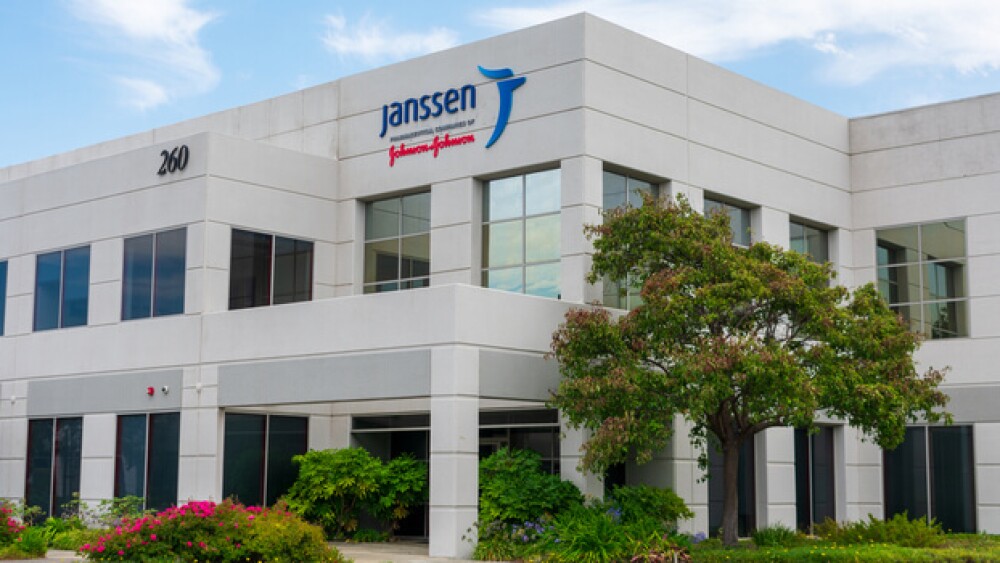Long-term data from Janssen’s Phase III DISCOVER-2a trial show that TREMFYA® (guselkumab), a selective IL-23 inhibitor, lead to skin clearance and joint symptom relief for up to two years in patients with active psoriatic arthritis.
TREMFYA is showing long-term efficacy. (Michael Vi/Shutterstock)
Long-term data from Janssen’s Phase III DISCOVER-2a trial show that TREMFYA® (guselkumab), a selective IL-23 inhibitor, lead to skin clearance and joint symptom relief for up to two years in patients with active psoriatic arthritis (PsA).
Janssen’s TREMFYA was approved for the treatment of adults with moderate to severe plaque psoriasis (PsO) in the U.S. back in July 2017 and then again in July 2020 for adults with active PsA. The latter approval was based on trial data from the DISCOVER-1 and DISCOVER-2, both of which showed that the treatment led to at least 20% improvement in joint symptoms (ACR 20) by 24 weeks.
TREMFYA is a selective inhibitor of IL-23, a key cytokine that fuels an inflammatory immune response associated with symptoms of PsO and PsA.
“PsA can be a chronically painful and debilitating disease, and many PsA patients are still searching for enduring relief of their symptoms,” said study investigator Philip J. Mease, M.D., of the Swedish Medical Center/Providence St. Joseph Health and the University of Washington, Seattle, Washington. “These data, which show that the observed benefits of TREMFYA in PsA continue through two years, represent positive news for physicians and patients alike.”
Findings from the new trial show that 56% and 55% of patients who took TREMFYA every four and every eight weeks, respectively, experienced at least a 50% improvement in the ACR score through 100 weeks. Approximately 62% of patients who took TREMFYA every 4 weeks and 55% of patients who took TREMFYA every eight weeks with clinically meaningful baseline PsO also achieved complete skin clearance by follow up.
Approximately 59% and 53% of those who had clinically meaningful baseline skin involvement who received TREMFYA every four weeks and eight weeks, respectively, experienced complete skin clearance by week 100. Additionally, 76% of patients treated with TREMFYA every four weeks and 74% treated every eight weeks had at least a 20% improvement in the ACR by the long-term follow-up period.
TREMFYA every four weeks also demonstrated significant inhibition of radiographic progression of joint structural damage at week 24. Rates of radiographic progression of joint damage observed from week 52 to 100 in patients who received the treatment every four and eight weeks were also numerically lower than those reported from baseline to week 52.
In terms of durability, the investigators of the DISCOVER-2a trial found that treatment with TREMFYA led to “robust joint and skin response rates” and improvements in outcome measures through the two-year follow-up period. Up to 90% of patients randomly assigned to TREMFYA also continued their assigned therapy through week 100. Overall, no new safety signals were observed through week 112.
“PsA is a chronic inflammatory disease of the skin, joints, and soft tissue and therefore, sustained control of this inflammation is important to physicians and patients,” said Alyssa Johnsen, M.D., Ph.D., Janssen Research & Development’s Vice President and Rheumatology Disease Area Leader. “These long-term study results further bolster our confidence in the ability of TREMFYA to significantly improve the diverse manifestations of PsA over time.”
Janssen said in a statement that the data from the DISCOVER-2a trial will soon be presented in abstract, poster, and video form during the Innovations in Dermatology: Virtual Spring Conference, held March 16 through 20, 2021.





